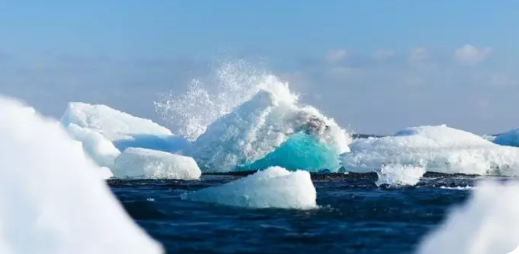The Arctic is on the frontline of climate change, with its temperatures rising three to four times faster than elsewhere on Earth. To understand and predict the impacts of these disruptions, two teams from the École Polytechnique Fédérale de Lausanne (EPFL) have traveled to the region. One team focuses on studying the composition of Arctic air, while the other quantifies greenhouse gases sequestered in Greenland’s fjords.
Decoding Arctic Air: Aerosols at the Heart of Climate Issues
In the Arctic Ocean, life proliferates, altering the production of biological aerosols (particles suspended in the air from living organisms) that, in turn, influence cloud formation. Depending on their composition and distribution, these clouds can either cool or warm the region, depending on the extent of sea ice.
The team led by Julia Schmale, Director of the Extreme Environments Research Laboratory (EERL) at EPFL, has concentrated on understanding cloud formation in this region.
Julia Schmale explains:
“We know that Arctic clouds are generally composed of water droplets and ice crystals, but we still do not know their exact composition and how they form. For example, what are the seeds of these droplets and ice crystals made of? Sea salt? Organic or inorganic particles? Mineral dust? And, importantly, do these seeds come from natural sources or human activities?”
Two recent studies published by her team provide insights. The first study, published in Elementa, quantified biological aerosols in Arctic air. These aerosols, mainly bacteria and amino acid particles, are highly effective at forming ice crystals at relatively high temperatures (-9°C). This research relied on data collected over a full year (2019-2020) aboard an icebreaker as part of the MOSAIC expedition.
Julia Schmale adds:
“We used a laser instrument to measure, second by second, the fluorescence of airborne particles. These fluorescent particles are generally of biological origin. The data allowed us to estimate the concentration of natural biological aerosols in the air and hypothesize about their origin.”
The second study, published in Climate and Atmospheric Science, employs machine learning to analyze meteorological data from the past decade. This work has clarified the factors responsible for producing an essential marine aerosol, methanesulfonic acid, derived from Arctic phytoplankton.
AI was also used to predict the future evolution of this acid over the next 50 years. The EERL scientists worked with the Swiss Data Science Center to combine field observations with historical air mass trajectories and weather conditions. The new model based on these data was then used to understand the factors currently responsible for methanesulfonic acid aerosol production. Solar radiation, cloud cover, and water content in clouds were found to be crucial, indicating specific atmospheric chemical processes.
The scientists then calculated the trends of these factors over the past decade and extrapolated them for the future to quantify the presence of methanesulfonic acid throughout the Arctic seasons.
Julia Schmale comments:
“The main finding is that there will be relatively less methanesulfonic acid in the spring and much more in the autumn. This phenomenon is linked to seasonal changes in precipitation in spring and the sudden retreat of sea ice in autumn. This result means that climate change affects aerosols, which impact cloud formation, which in turn influences climate change…”
Exploring Greenland’s Fjords: A New Source of Greenhouse Gases?
Meanwhile, another team of EPFL scientists undertook an expedition in June 2024 to two fjords in southwestern Greenland. This mission aimed to measure the quantities of greenhouse gases, notably methane and nitrous oxide, dissolved in the fjord waters, which are fed by century-old glaciers. Led by Jérôme Chappellaz, Director of the Smart Sensors for Extreme Environments Laboratory (SENSE), this research is part of the international “GreenFjord” expedition (2022-2026), supported by the Swiss Polar Institute.
The fjords are complex environments where freshwater from glaciers mixes with seawater. The first fjord studied receives direct glacial meltwater, while the second is fed by a glacier whose meltwater flows onto land. These differences in the physical and chemical structure of the waters influence local microbiology and greenhouse gas concentrations.
Preliminary results suggest that these fjords could become an unexpected source of greenhouse gases, adding a new dimension to climate concerns.
Jérôme Chappellaz explains:
“Our work in Greenland explores possible natural feedback mechanisms. It provides insights into urgent fundamental science questions about the future of our climate, in a context where uncertainties and unknown processes are still numerous.”
An Uncertain Climate Future
These Arctic expeditions reveal the crucial importance of understanding natural processes that could amplify climate change. The research conducted by EPFL teams helps shed light on unknown aspects of the Arctic climate and provides essential data to predict the future of this sensitive region.
As temperatures continue to rise, it becomes imperative to continue these studies to better anticipate the effects of global warming. Future expeditions, including those planned for 2026 with the construction of the polar station Tara in Cherbourg, will be essential to address the many remaining questions.
The Arctic, often seen as an indicator of global climate change, is gradually revealing its secrets, but much remains to be discovered about the role this region plays and will play in the evolution of the global climate.
Source: actuia




